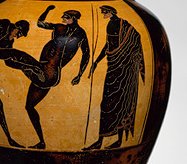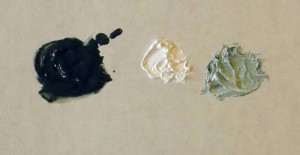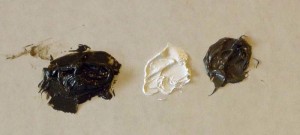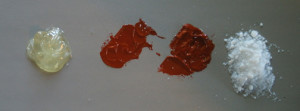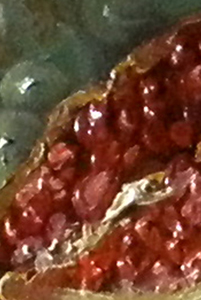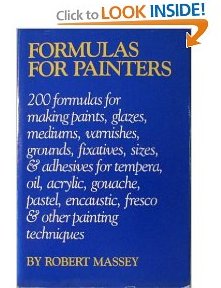The black figure style of Greek vase painting was invented about 700 BCE and crossed over into the Golden 5th century BCE when the red figure style was adopted. The technique of the former method was to apply a liquid clay called slip over the terracotta colored surface of the vessel. This created black silhouettes atop the reddish color. This was … [Read more...] about Greek Vases 101
Margret's Blog
Nicosia Green Earth
Left - Pure Nicosia Green Earth mixed with Linseed Middle - Holbein Silver White Right - Exact beads of each color mixed together Nicosia Green Earth has many differing properties than Bohemian. This one has far lower saturation qualities. As you can see, mixing the same size bead together resulted in a much more pastel tone. This is a … [Read more...] about Nicosia Green Earth
Bohemian Green
Left - Pure Bohemian Green Earth mixed with linseed Middle - Pure Holbein Silver White Right - Exact beads of each color mixed together Working with historical colors is consistently challenging, especially when considering the natural green earth pigments. Their characteristics are vastly different in all aspects including handling … [Read more...] about Bohemian Green
Fumed Silica Gel Stays Where You Put It
Left - Fumed Silica Gel mixed with linseed oil Second from Left - Red Iron Oxide mixed with linseed Second from Right - Red Iron Oxide mixed with Fumed Silica Gel Far Right - Fumed Silica Gel dry There are basically two ways to paint with oil paints. One is oil only, and the other is using solvents. These days many people are … [Read more...] about Fumed Silica Gel Stays Where You Put It
Close Ups
This detail shows how the fumed silica gel changes the consistency of the paint. On the left is pigment mixed with linseed oil. On the right is the same paint mixed with about 1/4 part silica gel. The workability of this is just magnificent. It is fluffy and lightweight, has no odor, and stays where you put the brushstroke. It does not level out or … [Read more...] about Close Ups
Strasbourg Medium
Robert Massey's Canada balsam and sun thickened oil medium recipe resembles closely the legendary but no longer available, olio d'Abezzo. Strasbourg Medium Canada balsam, 4 parts, sun thickened linseed oil, 1 part, turpentine, 2 parts. Combine and warm the ingredients either in hot sunshine or over a double boiler, and stir them until they … [Read more...] about Strasbourg Medium

